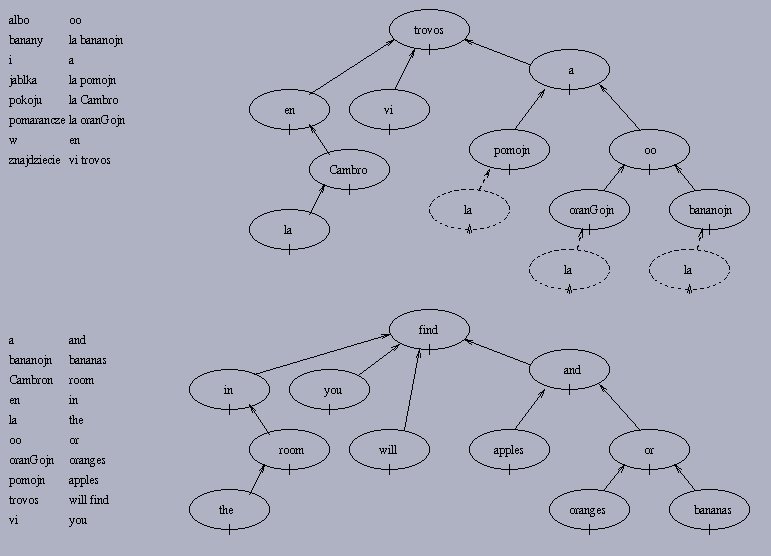

TEXT: In the room you will find apples and (oranges or bananas).
TEXT: In the room you will find (apples and oranges) or bananas.
The above diagram illustrates how the vowels "o" and "a" can unambiguously act as "OR" and "AND" in a tree that represents a spoken sentence. Since no human language is capable of doing this, artificial language had to borrow from monkey, ape, and chimpanze sounds to produce unambiguous grammar for logical connectives.
The spectrum of language, in terms of vowel/consonant use, spans from Ape to Jewish and Arabic. In Polish the word vowel is pronounced samogloska and consonant is pronounced spolgloska. Literally this translates into stand-alone sound and conjoined sound. Hebrew and Arabic languages use vey few if any vowels. The less the better. So most of the sounds in these languages end up being conjoined. Chimps on the other hand don't use any consonants. Their language is very simple and consists of two vowels repeated over and over. O-o-o and A-a-a. This combination just happens by chance to be the letters that begin the words "OR" and "AND" in English! Spanish comes close to this concept by using the vowels "O" for "OR" and "Y" for "AND". But these vowels cannot be repeated in Spanish in order to create an unambiguous grammar.
By allowing the repetition of the stand-alone letters "O" and "A" an unambiguous grammar is created that can be used to create a Level 5 compliant artificial language.
US Copyright 2006